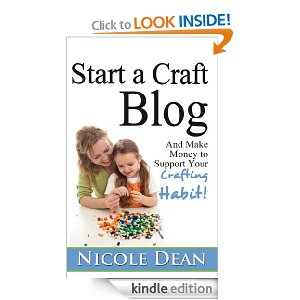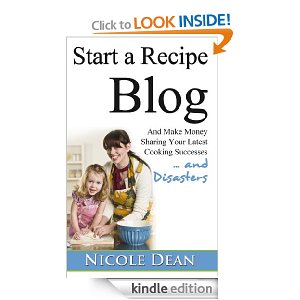Toys A Big Part Of Your Clutter? It May Not Be A Storage Problem.
Has toy clutter taken over your house? Have you designed and redesigned storage solutions for your kids’ toys, but can’t keep the clutter from getting scattered all over the house? This may not be a problem of storage; it may be that there are just too many toys. Your kids will continue to get more and more toys with each passing special occasion, so how do you control the “toy buildup”? For this, you’ll need to enlist your kids’ help.
Involving your kids with the decisions made to dispose of their toys is the first step to a successful decluttering. Talk to your older children beforehand so they will feel like an ally, and to get valuable information about which toys are still interesting in their opinion. Instead of asking your younger children which toys still interest them, you may have to observe them as they play to see which items they ignore.
There are three categories of toys; the toys that are always played with, the toys that have been outgrown, and the broken toys. Where do you begin sorting out this mess? We’ll start in the toy box and playroom and then move into the living areas of the house.
For the first part of the process you don’t really need, or want the kids to help, especially if you have a hoarder in the family. Broken toys, games, and puzzles with missing pieces, need to be thrown away, and your decision is final when it comes to this step. Once you get down to just the good toys, you’ll probably find you’ve made a little dent in your clutter already. You may even have some room now in your toy box and shelves.
Now, bring in the older kids. Sit down with your kids and ask them which toy, game, book, and puzzle they like to play with. Don’t worry if they say “everything!”, you’ll be going through this process again when the toys don’t fit in the toy box or on the shelves. Take the toys that your kids say they don’t play with anymore and put them in a box.
Take a look at your younger kids’ toys. Depending on your child’s age, you may or may not be able to enlist their help. Box up the toys that you decide are no longer being played with by your toddler. Once you’ve made decisions about what to keep, it’s time to bring in the younger children. As much as they can participate, ask your younger kids to go through their toys and see if they are willing to part with some items.
Keep in mind that toddlers may not fully understanding the concept of choosing toys to give away. Younger children may be over-zealous, getting into the spirit of giving away their toys. They may realize later that they gave away a special toy that they want back. Because a little adjustment time may be necessary, you will want to box up your younger child’s discarded items for awhile and set the box away. If there was a mistake, and they gave away a “favorite” toy, you’ll be able to return it to them. If, after a week or two, they realize they don’t miss the toys, then it should be alright to give the toys away.
You will want your younger children to have a chance to look through the box of toys that the older siblings have rejected or outgrown. It’s their opportunity to see if there is anything they’d like to keep that their older brothers or sisters discarded. Be sure to pull toys that your toddler is not yet old enough to play with. These toys could be boxed and stored for later years.
Time to move into the living areas of the house to look for abandoned toys. Use the same method you did in the playroom with the toys scattered around the house. Go room-to-room, gathering toys, throwing out the broken ones, and asking your children if they still want the toy that was abandoned. If they say they want it, then it’s their job to retrieve it and put it where it belongs. You are now decluttered. How can you make it last? And, how can you encourage your children to keep the playroom and house free of toy clutter?
“Out with the old and in with the new.” Going through this process of giving away old toys is often easier after receiving new toys. Children don’t feel as desperate to hang onto their older toys when they’re presented with a shiny new toy. Makes sense? Adults suffer from the same feelings of sacrifice. Why make the process any harder than you have to? Use gift-giving occasions as a time to replace some of the toys on the shelves with the new toys your child received. If you do this after each onslaught of new toys, you’ll be routinely decluttering several times a year.
Money is a good way to encourage your older children to get involved in decluttering the playroom. Your older children may be motivated to clean out their unwanted toys if they can stage a yard sale with the proceeds going into their own pockets. This may involve more time and effort than you are willing to undertake at first, but watching your children clean house may be worth it!
Your children may be encouraged to sort through their toys if you teach them about donating to kids that are not as fortunate as they are. Choose any of the charities in your community that will take gently used books, toys and games, including hospitals and shelters. Do your own decluttering at the same time to show your kids that you are willing to give up some of your things, too. Make a family trip to drop off these donated items. This is a great way to declutter and bring awareness of the need to help others to your children.
Now that you’ve gotten a handle on those toys, it’s on to the next project. Join us right back here for more tips and tricks for decluttering your home… and your life!








March 6th, 2009 3:13 pm
Excellent Tips! I continue to struggle with the “storage problem,” I guess I just need to get rid of some toys!
May 27th, 2009 2:02 pm
My daughters tend to be pack rats and I tolerate it to a point. They each have an organizer shelf in their room that they can pile as many toys on as they want I also allow them several boxes in their closet to store the overflow. They do not have to look neat but the toys must either fit in the organizer or in one of the boxes (the lids must close on the box. Once I notice that the toys have exceeded this limit I will pick a Saturday and depending on how out of control the toys are I give each daughter 2-3 garbage bags. They have the weekend to fill up the bags. They can fill them up with anything in their room and unless they ask for my help I leave them alone to sort through their stuff. By Sunday night there needs to be 2-3 bags filled sitting by their door and all other toys must be put away. Monday when they leave for school I go into their rooms with a bag of my own anything on the floor goes in the bag. If their boxes in the closet do not close I put whatever in on top of the boxes in the bag until they close. If they do not fill up the required number of bags, bags must be full to the top partial bags do not count, then for every 1 bag they are short I will fill up 2 bags. After my inspection I take the bags they left by the door along with any I filled up and take them to the dumpster.
I have found that allowing them the decision makes the process go smoother. It has also made them consider when they get a new toy if they really want it because with every new toy their storage space will fill up. The first time I did this my oldest tried to cheat the system by filling each bag up less than half way and stuffing her excess toys in the back of her closet. Needless to say once she got home and saw 6 bags piled up in her room she knew I was serious. I allowed her to reduce the number of bags from 6 to 4 and since then My inspections I have not had to throw away a single thing.